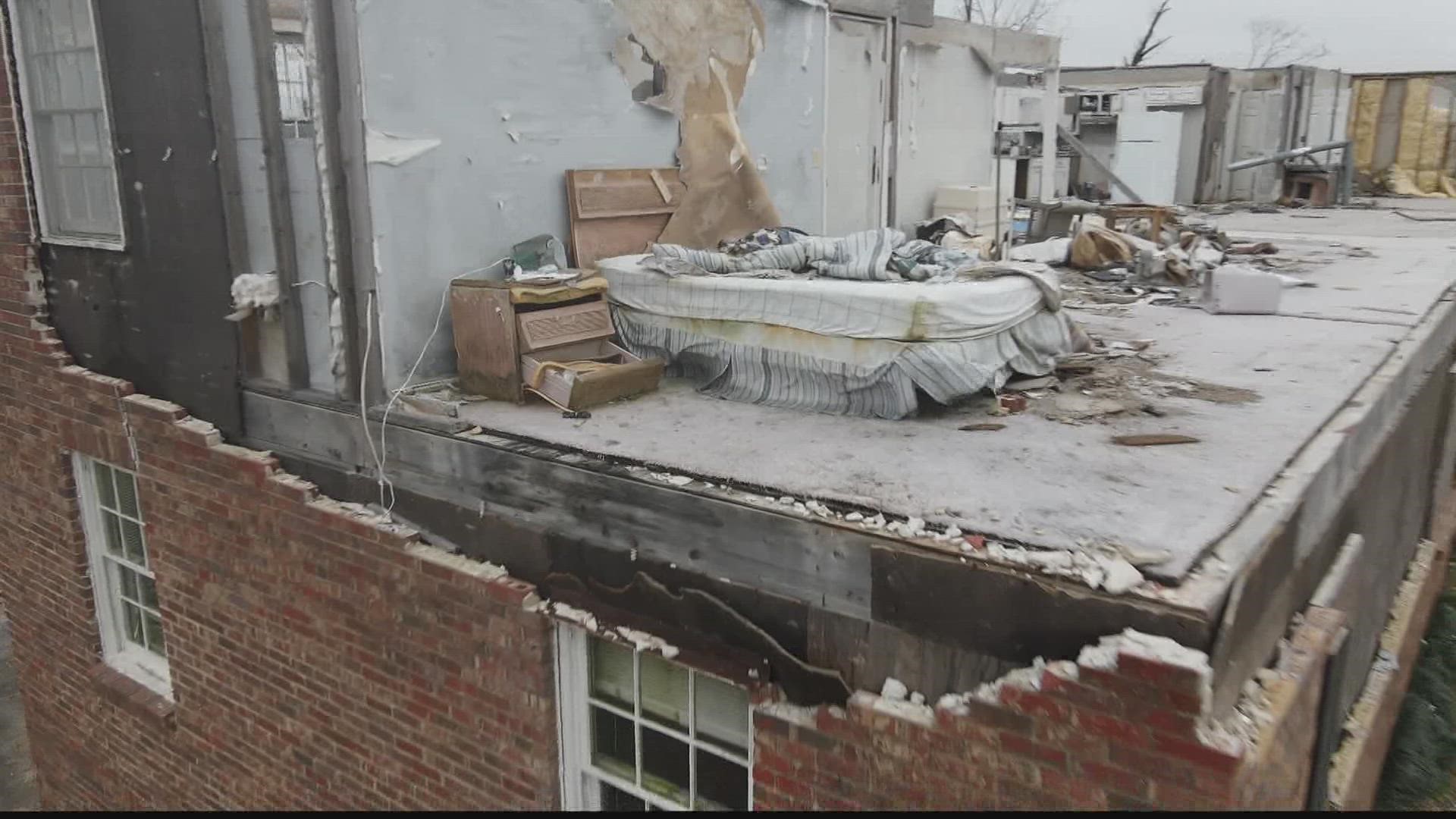NEWNAN, Ga. — Areas in Coweta County and the City of Newnan still suffer, one year after an EF-4 tornado tore through parts of north Georgia in the overnight hours of March 25 and 26 of 2021.
The damage, destruction and costs of recovery are staggering.
Driving through neighborhoods that were in the tornado's path, some homes have been rebuilt, others are still being restored, others are still in ruins, and others have just disappeared — razed to leave nothing but vacant lots.
The unhealing wounds, to home after home, are prominent — wounds that are hardening into deep scars on the neighborhood landscapes.
And that’s even with the powerful, massive outpouring of volunteers and donations, from across the state, that has embraced the county since the tornado.
One year later, the residents' number one goal is still nothing less than full recovery.
“That saying, ‘Newnan Strong,’ I think is so true in this situation because every day we see more people coming together, whether it’s volunteering to help with rebuilding, or removing debris, or giving,” Kristin Webb, the Executive Director of the Coweta Community Foundation said.
RELATED: After tornado wrecked his home, Newnan man unexpectedly finds way back to normalcy next door
The foundation continues to raise money and recruit volunteers to help make residents whole, long-term.
Since the tornado, there have been more than 16,000 insurance claims from the region, mainly from Coweta County residents, totaling $200,000,000, according to the Georgia Office of Insurance.
County Manager Michael Fouts said the ravaged property included 1,726 homes in Coweta County that were damaged or destroyed.
Many residents who have received insurance companies' payments are finding out they were underinsured, Webb said. And, according to FEMA, 31% of the residents had no insurance coverage at all.
The foundation has raised $2,105,000 so far to help them and others.
Most of the money raised came from a benefit concert this past summer, headlined by country music star Alan Jackson, a Newnan native.
The foundation has given $460,000 “as grants to 52, local nonprofit agencies, churches and schools that stepped in to provide housing, child care, medical aid, construction management, volunteer labor and food assistance to tornado survivors,” wrote the foundation’s communications manager, Jill Whitley, in an email to 11Alive this week.
In addition, Whitley wrote, the foundation has provided “almost $225,000 in direct financial assistance” to date, to individuals impacted by the storm. “We estimate that more than 2,500 individuals have received help from the Foundation’s Long-Term Recovery Fund,” so far. “In the weeks, months, and even years to come, we will need not only additional funds but significant amounts of skilled and unskilled volunteer labor to assist us with construction management as we work to repair destroyed and damaged homes.”
The City of Newnan has spent more than $8 million to haul away all of the fallen trees and the construction and demolition debris.
Sen. Rev. Raphael Warnock (D - GA) is still angry that FEMA rejected the state’s request to pay individual disaster assistance to Coweta County and Newnan residents.
“Progress has been made, but not nearly enough,” Warnock said. “And so I intend to continue to push FEMA and the other entities of our government to make sure that we get the people of Newnan and Coweta County the relief that they deserve. Public assistance has been provided. But there are other declarations with respect to individual assistance that were denied."
Warnock is also working to come up with other federal money.
“I think we have to be innovative, we have to be creative in trying to find relief, and I'll be pulling on all the levers available to me,” Warnock said.
Webb said the foundation will continue to do all it can to help with relief efforts in the coming years, but emphasized it will be a long road to recovery.
“I think one of the biggest pieces is to remind people,” Webb said, “that tornado relief takes a really long time. And based on FEMA’s calculations – it’s a three-year process for our community to truly be restored.”

